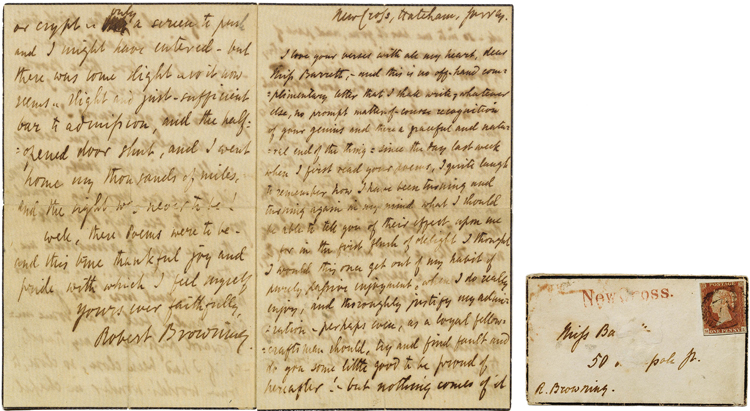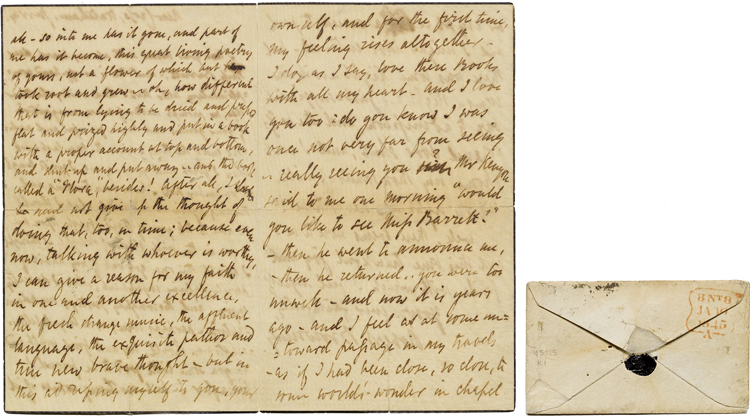The love letters of Elizabeth Barrett and Robert Browning are surely some of the most famous ever written. As a tale of intellectual sympathy, mutual love, and a daring elopement, they need no editing to tell their thrilling story. Romantics love them because the story is better than fiction. Scholars love them because they are a record of the creative genius of both poets, who wrote some of their best work during the time of their courtship. Harvard University Press published a 2-volume transcription of the letters in 1969, but no complete photographic copies of the originals have been made until now.
Wellesley College and the Armstrong Browning Library at Baylor University have agreed to collaborate on the digitization and accessibility of the Elizabeth Barrett Browning and Robert Browning materials housed in each institution. Such a combined virtual collection would create the most important Browning repository in the United States. For some years Baylor has been managing a bibliographic guide to publicly known Browning materials, which is now electronic. (The Brownings: A Research Guide)
By partnering with Baylor, Wellesley’s Browning materials will be accessible to researchers through Baylor’s existing infrastructure. All materials—both those owned by Wellesley and those owned by Baylor—will be available to researchers throughout the world at no cost. Thanks to the generous gift of Walter C. Klein, we were able to hire professionals from 42-line, a digital imaging company based in Oakland, CA to work on-site in Special Collections. In two weeks, they were able to finish the first phase of the project, which includes the 573 love letters and all of our individual Elizabeth Barrett Browning full-length manuscripts. Both Robert and Elizabeth wrote copious correspondence with leading artists and authors of their circle, a large amount of which is also owned by Wellesley. Digitizing of this remaining material will be the next phase of the project, depending on funding.
Because of the condition and value of Wellesley’s Browning documents, a significant infrastructure is required to both manage and make accessible the digital surrogates. Baylor University has generously offered to satisfy both of these needs. The Browning Guide (and a corresponding CONTENTdm image management system) will be used to facilitate researcher access, and Baylor’s existing relationship with the Texas Digital Library’s digital preservation program will ensure the long-term integrity of the digital files.
The first letter Robert Browning ever sent to Elizabeth Barrett:
And her reply:
 A camera operator from 42-line, at work in their temporary studio
A camera operator from 42-line, at work in their temporary studio
in the Special Collections facility in Clapp Library.
Ruth Rogers,
Curator of Special Collections





